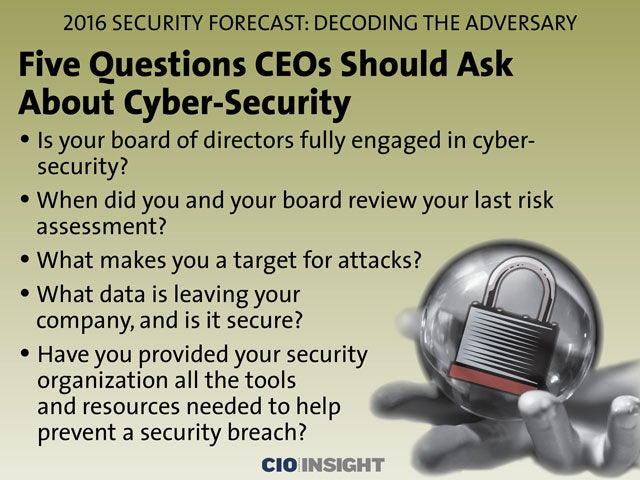
2016 Security Forecast: Decoding the Adversary
 2016 Security Forecast: Decoding the Adversary
2016 Security Forecast: Decoding the Adversary
Cyber-crimes continue to plague large enterprises, small businesses and the health-care industry in particular—and 2016 has more security challenges in store.
 DDoS Attacks Expected to Rise
DDoS Attacks Expected to Rise
DDoS are attackers’ favorite tool. There may be an increase in hacktivism, and threat intelligence will start playing a huge role in defending against DDoS campaigns.
 Small Businesses and Institutions Will Be Targeted
Small Businesses and Institutions Will Be Targeted
Just as businesses embrace analytics, so do hackers. Now they do not just have to target large organizations because they can get equally valuable data elsewhere. That means smaller organizations will be affected.
 Cyber-Crime Black Market Will Expand
Cyber-Crime Black Market Will Expand
Corporate boards are starting to recognize that the cyber-crime black market is growing. As a result, there is a rise in risk management and awareness at the C level of cyber-security related risks, which will continue to grow.
 Health Care Faces More Threats
Health Care Faces More Threats
Attacks in the health-care sector will increase because these companies have valuable information. Legacy systems and networks, reliance on service providers and emerging technology adoption will also make health care an attractive target.
 Organizational Silos Will Disappear
Organizational Silos Will Disappear
Enterprises will start removing silos in order to improve security, awareness, communication and interoperation. Accountability for security will be shared.
 Use of Threat Intelligence Will Rise
Use of Threat Intelligence Will Rise
Businesses will become more proactive in their security defenses and use threat intelligence more. Managed security will continue to grow.
 Cloud Attacks Will Expand
Cloud Attacks Will Expand
Security attacks on the cloud will grow more serious and widespread in 2016, affecting large and midsize businesses. This will lead to more effective cloud controls and security to better protect critical data.
 Recovery Costs Will Rise
Recovery Costs Will Rise
With the rise in cloud attacks will come an increased focus on very secure cloud networking solutions.
 Five Questions CEOs Should Ask About Cyber-Security
Five Questions CEOs Should Ask About Cyber-Security
Is your board of directors fully engaged in cyber-security? When did you and your board review your last risk assessment? What makes you a target for attacks? What data is leaving your company, and is it secure? Have you provided your security organization all the tools and resources needed to help prevent a security breach?